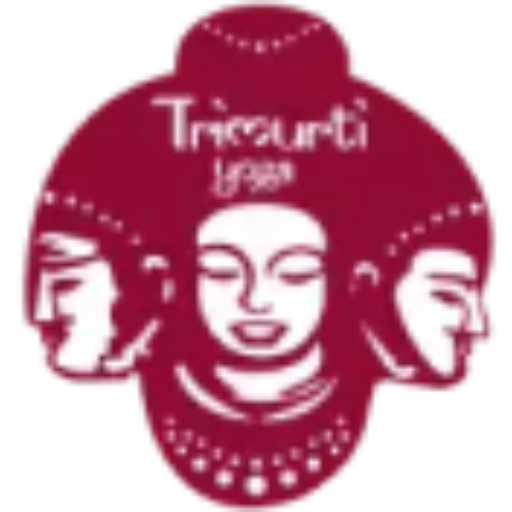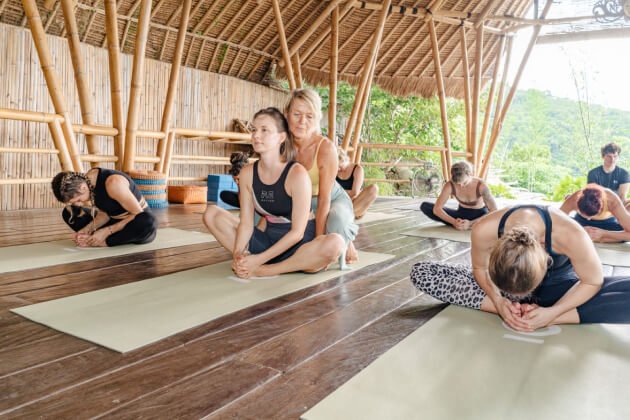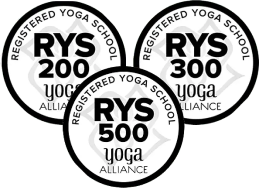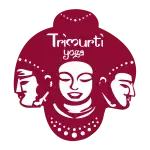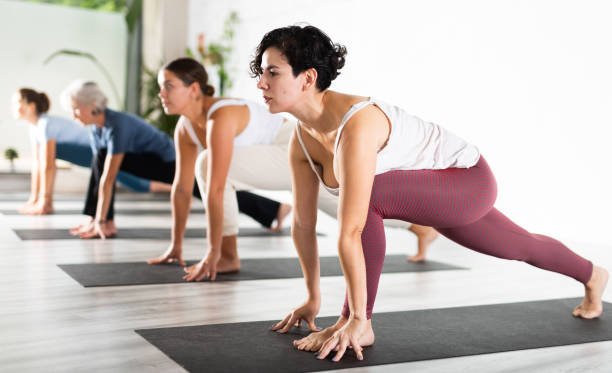
Have you ever been curious about what it is? Vinyasa yoga is a very popular style that combines movement with breathing. It is usually described as a practise with a theme or goal that is made up of poses that are linked and related to each other. As many teachers as there are, there are as many versions, sequences, and definitions. So, what is Yoga Flow, and how did it come to be?
Simple, modern Vinyasa Flow Yoga, also called Flow Yoga, is best described as “freestyle Ashtanga Vinyasa” because it doesn’t follow the strict structure of K. Pattabhi Jois’s Ashtanga Vinyasa series. It lets you move from one pose to the next instead of staying in the same pose the whole time.
Many Vinyasa Flow classes at yoga studios are based on the Ashtanga Primary Series. They start with Suryanamskara A and B and then move on to other sequences. Many classes also stick closely to the Ashtanga tradition’s basic standing sequence and the finishing sequence. There is no set order to the poses. Every class can be unique. Vinyasa yoga’s basic structure lets you try out a changing set of poses. The Ashtanga Vinyasa series practise makes it easier to try poses from the first, second, and third series of Ashtanga.
Table of Contents
ToggleWe Also Provide These Courses
- 300 Hour Yoga Teacher Training in Bali
- 200 Yoga Hours Teacher Training In Bali
- 100 Hour Yoga Teacher Training in Bali
Where Did Vinyasa Yoga Originate?
Yoga Flow is not a system and does not have a clear lineage, hierarchy, or leading guru. There is no one who can claim to have started Yoga Flow. Yoga Flow is a modern style of yoga that came from the ancient Ashtanga Vinyasa Yoga. In turn, the Ashtanga Vinyasa style is based on what Sri Krishnamacharya taught. Krishnamacharya taught that the movements between each asana are just as important as the postures themselves. His goal was to improve his ability to focus and be aware of his body throughout the whole practise. Instead of focusing on “getting into the posture” and then breathing, the goal of Vinyasa Yoga is to keep deep breathing and body awareness even as you move from one pose to the next.
People think of Sri Tirumalai Krishnamacharya as the “grandfather” of modern yoga. In 1916, he went to the Himalayas to learn how to do yoga. There, he met Sri Ramamohan Brahmachari, who became his guru, and lived with him for seven and a half years. During this time, he studied Ashtanga (Raja) Yoga, which is also called the Eight Limbs of Yoga.
In 1933, he started teaching yoga to Indian and Western students in Mysore, India, and then later in Madras, India. Pattabhi Jois, Indra Devi, BKS Iyengar, and TKV Desikachar, his son, are some of his best-known students. Different styles of yoga came from the same source, but were changed by these masters. Their representatives were all students of Krishnamacharya at different times. In Mysore, Krishnamacharya taught both more traditional and original forms of Ashtanga Yoga as well as other types of yoga. In Madras, he changed his style, which became Viniyoga in the end.
T.K.V. Desikachar
Krishnamacharya was the father of T.K.V. Desikachar, who lived from 1938 to 2016. He thought that yoga should be made to fit the needs of each person. He used the term “Viniyoga” at first to describe his style of Hatha Yoga. Later, he stopped using the term, but not the method.
Desikachar was trained as a structural engineer, but he spent most of his adult life giving talks and teaching yoga. He also started a yoga centre in Chennai, India, called Krishnamacharya Yoga Mandiram. T.K.V. Desikachar was born in India. As a child and young adult, he wasn\’t interested in yoga. In his 20s, he went back to where he came from and learned from his father.
Desikachar gave his first talk in the U.S. in 1976. After that, he came back often to teach and talk about his approach to yoga and yogic healing. He thought that yoga could be useful for everyone, no matter what their physical abilities were. Adapting yoga practises to each yogi\’s needs was at the heart of his method. He used yoga therapy to combine the physical practise of asana, the breathing technique of pranayama, the mental practise of meditation, and the traditional medical system of Ayurveda to improve overall health and mental health.
K.S. Patthabi Jois
Patthabi Jois came up with the Ashtanga school. During the first half of the 20th century, he taught in the Indian city of Mysore. Later, Jois taught Ashtanga Yoga as a kind of moving meditation that he also started to call Ashtanga Vinyasa.
In Ashtanga Vinyasa Yoga, breathing and moving are done at the same time. Most of the Vinyasa Yoga, Power Yoga, and Yoga Flow styles that have become so popular in the West are based on Ashtanga Vinyasa Yoga.
What Does Vinyasa Mean?
The word vinyasa is made up of two separate words. Nyasa means “to place,” “to give a special order,” “to pay attention,” and “vi,” which means “specially.” Vinyasa can mean a lot of different things in Sanskrit, but when it comes to yoga, it’s best to think of it as
- in a unique
- Special order
- Paying close
People usually think of it as a practise that has a theme or goal and is made up of poses that are linked and related to each other.
As many teachers as there are, there are as many versions, sequences, and definitions. Vinyasa Yoga or Vinyasa Flow is not a system. There is no clear lineage, no hierarchy, and no one person who is in charge.
Vinyasa is usually written with all lowercase letters, and it usually means how the asanas flow into each other. Ashtanga Vinyasa yoga is known for its smooth jump-backs and jump-throughs from one pose to the next. Most of the time, it is used to describe a specific linking sequence (based on the sun salutation: chaturanga, up dog, down dog) that goes with the breath and moves you from one pose to the next. Instead of just a set of separate poses, the practise becomes a flow that is timed to the breath.
The vinyasa gives the practise a rhythm, keeps the body warm, builds strength in the upper body, and acts as a counterbalance to stretch the legs and get the spine back to neutral for the next sequence.
A vinyasa is any set of movements that flow from one asana to the next. It doesn\’t have to be related to the sun salutation movements done in Ashtanga Vinyasa style practise.
A Vinyasa Flow class focuses on the connections between poses and how to move from easier to more difficult asanas while keeping in mind the idea of moving “in a special way.” Teachers also often help students set an intention and keep the connection between their body, breath, and mind.
What makes Vinyasa or Flow Yoga different?
Vinyasa Yoga & Linking of Poses
Through the breath, Vinyasa yoga moves from one pose to the next. When the poses are done at the same time, they flow into one another. This is why “Flow Yoga” is sometimes used to describe it. Hatha Yoga, which is a more traditional style of yoga, is the opposite of Vinyasa Yoga. In Hatha Yoga, students move into an asana, hold it for a while, and then “break the posture” by getting up.
The flow of Vinyasa yoga is started by the breath.
The breath is always what starts the change from one asana to the next. Physical activity might make breathing deeper and harder, but it should still be regular and through the nose. The breath gives the poses their rhythm and timing, which is what makes them work together. Krishnamacharya used to go from town to town with his students to put on yoga shows. So that they all moved at the same time, he told them to breathe deeper and with a small tightening in the throat. This is called “Ocean Breath” or “Ujjayi Breathing” by most people.
Vinyasa yoga is good for your heart and lungs.
Most of the time, a Vinyasa Yoga practise involves intense movements and gives your heart and lungs a workout, which isn’t always the case with other types of yoga asana practise. This is different from the traditional Hatha Yoga principles, which say that we should try to keep the heart rate at a resting rate to stimulate more subtle processes in the body (the endocrine system, the lymphatic system, etc.).
The Many Kinds of Change
Different kinds of Flow Yoga
One thing that makes Vinyasa Flow classes stand out is that the order of moves changes from class to class. None of the classes are the same. If you’ve taken a Vinyasa yoga class at your yoga studio, you may have noticed this. This is very different from Ashtanga Vinyasa Yoga and Bikram Yoga, which both have fixed forms.
Vinyasa Yoga is a Moving Meditation
Due to its intensity and variety, Vinyasa yoga requires a lot of concentration. The practise can make you feel like you\’re meditating while you\’re moving.

